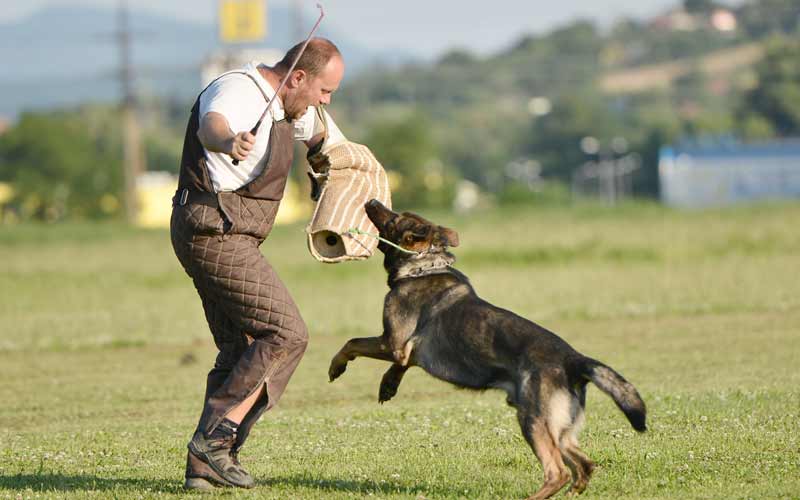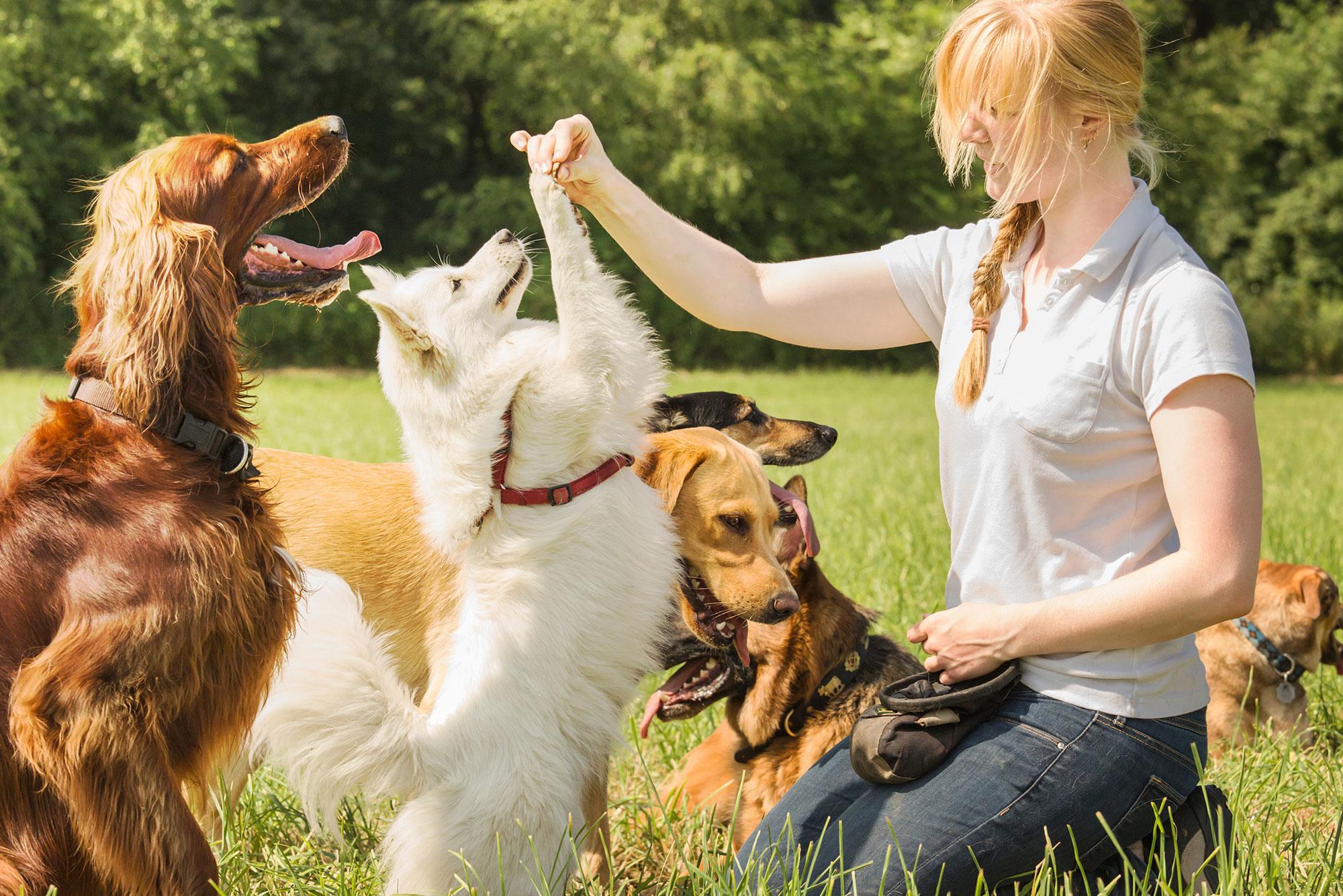Usual Behavioral Issues and Their Solutions in Dog Training
Usual Behavioral Issues and Their Solutions in Dog Training
Blog Article
Essential Tips for Successful Dog Training: A Guide for Animal Owners
Effective pet training is a diverse procedure that requires a tactical strategy customized to both the family pet's temperament and the owner's goals. Comprehending exactly how to navigate these challenges can substantially boost the training experience, eventually transforming the connection between owner and pet dog.
Understanding Dog Behavior
Recognizing pet behavior is vital for efficient training and promoting an unified connection between pooches and their proprietors. Pets communicate mostly through body movement, vocalizations, and activities, making it vital for proprietors to translate these signals properly. Identifying a pet's position, tail placement, and ear alignment can provide insights into its emotion. For example, a wagging tail does not always indicate joy; it can additionally signify exhilaration or anxiety.

Socializing plays a considerable role in canine behavior; direct exposure to numerous environments, people, and other pets can significantly influence a dog's character. Additionally, variables such as breed qualities and specific character should lead training techniques, as some breeds might have certain behavioral qualities that require customized strategies. By comprehending these elements, proprietors can produce a supportive atmosphere that urges positive habits, leading to effective training end results and a much deeper bond with their pets.
Establishing Constant Commands
Efficient interaction with your pet dog starts with establishing regular commands. This fundamental element of training is essential for fostering understanding between you and your pet. Uniformity in the commands you use guarantees that your pet can reliably associate details words or expressions with the wanted actions.
When selecting commands, choose clear, distinct words that are easy to differentiate and state from one an additional. Avoid making use of similar-sounding commands that might puzzle your dog. Using "rest" and "remain" is suitable, but "rest" and "hit" could lead to misunderstandings.
Furthermore, keep the same tone and volume for each command. Canines are sensitive to singing hints, so differing your tone can develop confusion.
It is equally crucial to make certain that all member of the family get on the exact same page regarding the commands used. A united front in command use will certainly stop blended signals and enhance the learning procedure.
Favorable Support Methods
The power of favorable reinforcement in pet training lies in its capacity to encourage preferred behaviors through benefits and praise. This strategy is based in the concept that actions adhered to by beneficial outcomes are more likely to be repeated. By integrating positive reinforcement into your training program, you can effectively form your pet's habits in a useful manner.
To apply positive reinforcement, it's necessary to recognize what encourages your pet, whether it be deals with, toys, or verbal appreciation. When your pet carries out a desired action, such as remaining on command, quickly reward them with a treat or love. This association in between the command and the positive outcome enhances their understanding.
It's important to timing the rewards properly; supplying the support within seconds of the desired habits helps your dog make the link (dog training). Furthermore, uniformity is vital-- make certain that pop over to this web-site all member of the family use the same commands and benefit systems to stay clear of complication

Progressively, you can decrease the frequency of deals with as your pet learns the actions, transitioning to commend or intermittent benefits. This approach not only fosters a solid bond between you and your pet but additionally advertises a positive understanding atmosphere, making educating a delightful experience for both.
Socialization and Communication
Consistently revealing your canine to a variety of environments, people, and other pets is vital for their social advancement. Socializing ought to begin early, preferably throughout the essential home window of 3 to 14 weeks, when young puppies are most receptive to new experiences. However, older dogs can likewise profit from recurring socialization initiatives.
Introduce your pet dog to different settings, such as parks, pet-friendly shops, and metropolitan areas. This direct exposure aids them adjust to different stimulations, reducing stress and anxiety and anxiety feedbacks. Motivate favorable communications with various other canines and people, making sure that these encounters are regulated and risk-free to foster confidence.
Make use of organized playdates with well-mannered canines, as this can enhance your pet dog's social abilities and instruct them appropriate habits. Obedience courses and training sessions additionally supply excellent chances for socializing, enabling your pet dog to connect with others in a monitored setting.
Display your pet's body movement during interactions, as Read Full Article this will certainly assist you determine their comfort degree. Progressively enhance direct exposure to even more tough scenarios while making certain that each experience is favorable. A well-socialized canine is more probable to show balanced behavior, making them a happiness to have in any kind of setup.
Resolving Usual Training Challenges
Every canine proprietor will experience training difficulties at some factor, despite their dog's age or socialization degree. Determining common concerns such as stubbornness, diversions, and terror can help in developing reliable methods for renovation.

Disturbances throughout training sessions can derail emphasis. To fight this, begin training in a peaceful environment with minimal stimuli. Gradually present diversions as the pet ends up being more proficient in commands. Short, regular training sessions are additionally efficient in maintaining attention.
Fearfulness can hinder a dog's understanding procedure. Gradual desensitization to the source of concern, coupled with favorable reinforcement, can aid ease anxiety. Persistence is crucial; never ever require a canine right into a circumstance that creates distress, as this might aggravate the problem.
Ultimately, understanding and attending to these usual difficulties with an organized approach will certainly promote an extra effective training experience, enhancing the bond in between canine and proprietor while promoting efficient discovering.
Final Thought
In summary, successful canine training depends on an extensive understanding of canine actions, the establishment of consistent commands, and the application of positive support techniques. Socialization plays an important function in establishing well-adjusted pets, while addressing typical training challenges needs patience and versatility. By implementing these important methods, pet dog proprietors can cultivate a strong bond with their pets and advertise preferable actions, ultimately bring about a harmonious partnership between humans and their canine friends.
Recognizing canine habits is necessary for efficient training and promoting a harmonious relationship between pooches and their owners.Socializing plays a considerable role in pet dog behavior; exposure to numerous atmospheres, people, and various other pets can significantly impact a dog's temperament.The power of favorable support in pet dog training exists in its ability to motivate desired actions with official statement incentives and praise. By integrating positive support right into your training program, you can effectively form your dog's actions in a positive fashion.
In recap, successful pet training counts on a thorough understanding of canine actions, the facility of constant commands, and the application of favorable support strategies.
Report this page